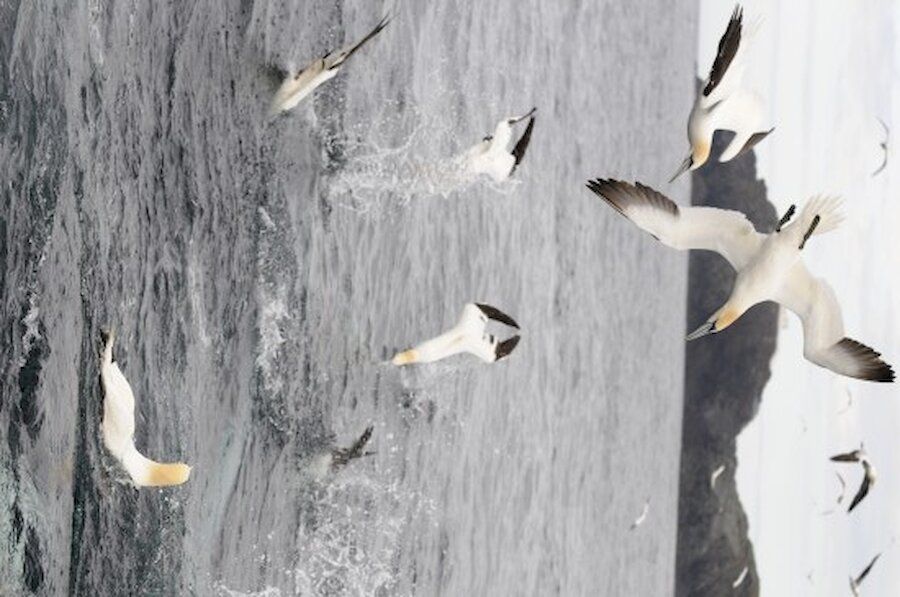With a population expanding at about 2% per year, Gannets are one of the most successful seabird species in the world. The UK is home to approximately 68% of the worlds breeding population. Here in Shetland our 'Gannetries' support around 25 - 30,000 breeding pairs, the largest of which is Hermaness and the Stacks around Muckle Flugga, though equally as impressive and perhaps better known is Noss with over 7,000 breeding pairs.
Gannets truly are wonderful birds; they have a wingspan of up to 180cm and reaching up to 3.5kg in weight, not to mention their pristine adult plumage and their spectacular and dramatic hunting techniques. Entering the water from heights of up to 40m above, Gannets can reach speeds over 80mph which can allow them to reach down to 15m bellow the surface. But achieving such techniques requires unique adaptations. To avoid a powerful and potentially painfull injection of water through the nostrils when diving, Gannets nostrils are located not on the outside of their bills but actually inside the gape. Their skulls are reinforced and special pouches in their throats are used are filled with air which all help to act as shock absorbers on impact. Capturing this exhilarating spectacle on camera is no easy task and I certainly hope that if I get the opportunity again, I will endeavour to do better! These pictures were taken off Muckle Flugga amidst a frenzied mel`ee as literally hundreds of birds dived in after mackerel.
The 'Solan Guus' is actually a protected species, however in the Western Isles, on Lewis a legal exception is made, where locals are allowed to take up to 2,000 'guga' each year which are still served as a traditional dish and something of a local delicacy. Although a primary source of protein throughout many of the Scottish Islands, Gannets were not thought to have featured as such a main food source in Shetland in days of old. I do know of one Shetlander (best to remain anonymous!) who in his younger years at the fishing actually once 'obtained' a specimen for consumption. Without crucial knowledge of cultural and culinary heritage, the key preparation and no doubt ingredients were lacking - the roast was inedible and the oven was replaced, I'm guessing the crew went hungry that day!



